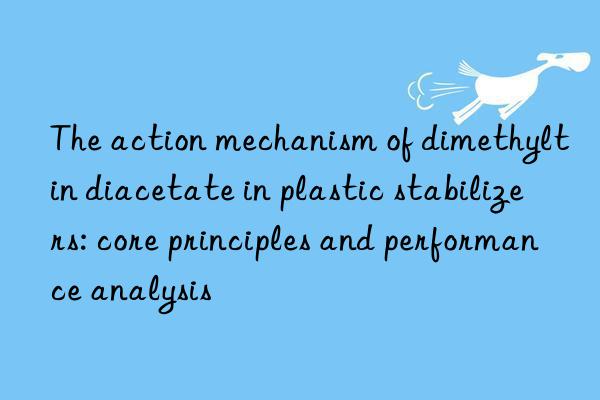
In the production and processing of plastic products, heat stabilizers are one of the indispensable additives. They can effectively prevent or delay the degradation of plastics. Degradation that occurs during high-temperature processing and use. Dimethyltin Diacetate (DMTD), as an organotin compound, is widely used in the stabilization of polyvinyl chloride (PVC) and other heat-sensitive plastics due to its unique chemical structure and properties. This article will delve into the mechanism of dimethyltin diacetate as a plastic stabilizer and reveal how it works at the molecular level.
Basic principles
Plastics, especially PVC, are prone to HCl removal reactions at high temperatures, leading to chain breakage and structural damage, thus affecting their physical and mechanical properties. As a heat stabilizer, dimethyltin diacetate mainly works through the following mechanisms:
1. Hydrogen chloride (HCl) capture
HCl will be released when PVC is thermally degraded, and the accumulation of HCl will accelerate the further degradation of PVC. Dimethyltin diacetate can react with the released HCl to form a stable complex, preventing the catalytic effect of HCl, thereby slowing down the degradation rate of PVC. This process is called the “capture” or “blocking” of HCl, and is the most direct and critical stabilization effect of dimethyltin diacetate.
2. Free radical termination
Free radicals will also be generated during thermal degradation. These free radicals can attack the PVC molecular chain and trigger a chain degradation reaction. The tin atom in the dimethyltin diacetate molecule has a certain Lewis acidity and can react with free radicals to terminate the free radical chain reaction and protect the PVC molecular structure from damage.
3. Cross-linking and chain transfer
Organotin compounds can also participate in the cross-linking reaction between PVC molecular chains, or adjust the molecular weight distribution through chain transfer reactions to form a more stable network structure, further improving the thermal stability and mechanical strength of plastics.
Special mechanism of action
The special thing about dimethyltin diacetate is its acetic acid group. In addition to the above basic mechanism, the stabilizing effect may also be enhanced in the following ways:
- Steric hindrance effect: The larger volume of the acetic acid group can hinder the close contact between PVC chains to a certain extent, reduce the possibility of inter-chain reactions, thereby protecting PVC molecules from heat effects of degradation.
- Synergic effect: In practical applications, dimethyltin diacetate is often used in conjunction with other types of stabilizers (such as metal soaps, phenolic antioxidants, etc.) to enhance the overall effect through synergy. stabilizing effect. For example, metal soap can capture HCl in advance, and dimethyltin diacetate can then further block uncaptured HCl. The two complement each other and improve the thermal stabilization efficiency.
Application challenges and prospects
Although dimethyltin diacetate performs well in the field of plastic stabilizers, its environmental and health risks cannot be ignored. With the increasingly stringent environmental regulations and the popularization of green chemistry concepts, finding and developing low-toxic, biodegradable alternatives has become an inevitable trend in industry development. Currently, scientific researchers are working on the research and development of new organotin compounds, inorganic compounds and non-tin thermal stabilizers, in order to maintain or improve thermal stability performance while reducing potential harm to the environment and human body.
In short, the mechanism of dimethyltin diacetate in plastic stabilizers involves HCl capture, free radical termination, cross-linking and chain transfer, etc. A variety of mechanisms and unique properties make it an important additive in the thermal stabilization of PVC and other plastics. However, as technology advances and environmental awareness increases, exploring more sustainable alternatives will be an important development direction for the plastics industry in the future.
Extended reading:
Non-emissive polyurethane catalyst/Dabco NE1060 catalyst
Dabco NE1060/Non-emissive polyurethane catalyst
Bismuth 2-Ethylhexanoate
Bismuth Octoate
Toyocat DMCH Hard bubble catalyst for tertiary amine Tosoh
Bis[2-(N,N-dimethylamino)ethyl] ether
Non-emissive polyurethane catalyst/Dabco NE1060 catalyst

 微信扫一扫打赏
微信扫一扫打赏

